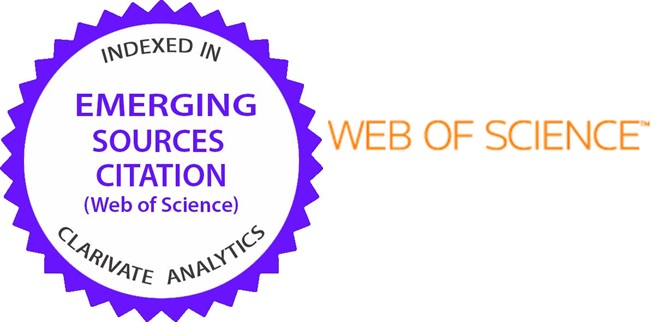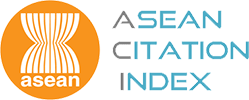Potential of Islamic Finance as Alternative Financing Option for SMEs
DOI:
https://doi.org/10.31436/ijema.v32i2.1190Keywords:
Isl?mic finance, Participation banking and SME, Alternative finance, SME financing, Scale developmentAbstract
This study aims at investigating the potential of Isl?mic finance as an alternative to the financing problem faced by companies operating as Small and Medium Enterprises (SMEs). Isl?mic finance is a sector that continues to develop. In addition, finance and markets are important in terms of their impact on the real sector. Addressing the impact of Isl?mic finance on these two situations not only reveals the basic motivation and necessity of the study but also emphasizes the originality and importance of filling the gap in the literature. Questionnaire forms were applied to 400 randomly selected SMEs operating in the provinces of Istanbul, Kocaeli, Sakarya, Bursa, Yalova, and Çanakkale by face-to-face survey technique. Explanatory and confirmatory factor analyses were applied to the scale within the scope of construct validity. Exploratory factor analysis determined that the scale has a 6-factor structure that explains approximately 76% of the scale. Therefore, it has been determined that the potential of Isl?mic finance as an alternative to SMEs has six dimensions. These dimensions are determined as Alternatives in terms of Personal Value Judgments, Sectoral Suitability, Financing Policies and Opportunities, Accessibility, Cost, and Access to Finance.
References
REFERENCES
Abduh, M., and M.A. Omar. “Islamic-Bank Selection Criteria in Malaysia: An AHP Approach.” Business Intelligence Journal 5, no. 2 (2012): 271-81.
Ahmad, A., K. Rehman, I. Saif, and N. Safwan. “An Empirical Investigation of Islamic Banking in Pakistan Based on Perception of Service Quality.” African Journal of Business Management 4, no. 6 (2010): 1185-193.
Ahmad, N., and S. Haron. “Perceptions of Malaysian Corporate Customers towards Islamic Banking Products and Services.” International Journal of Islamic Financial Services 3, no. 4 (2002): 13-29.
Al-Ajmi, J., A.H. Hussain, and N. Al-Saleh. “Clients of Conventional and Islamic Banks in Bahrain. How They Choose Which Bank to Patronize.” International Journal of Social Economics 36, no.11 (2009): 1086-112.
Amin, M. and Z. Isa. “An Examination of the Relationship between Service Quality Perception and Customer Satisfaction: A SEM Approach towards Malaysia Islamic Banking.” International Journal of Islamic and Middle Eastern Finance and Management 1, n. 3 (2008): 191-209.
Anderson, L.W. Attitudes and Their Measurement. Educational Research, Methodology, and Measurement. An International Handbook, Keeves, John P. (Ed), New York, 1988.
Ar?can, E., B. Tan?nm?? Yücememi?, and A. Çetin. ?slami Bankac?l???n Kalk?nmadaki Ralü ve Finasal Krizlere Yakla??m?, Editörler. Görmü?, ?., Albayrak, A., Yabanl?, A. (2021). Ya?ayan ve Geli?en Kat?l?m Bankac?l???, TKBB Yay?nlar?. ?stanbul, 2021.
Bley, J., and K. Kuehn. “Conventional versus Islamic Finance: Student Knowledge and Perception in the United Arab Emirates.” International Journal of Islamic Financial Services 5, no. 4 (2004): 17-30.
Büyüköztürk, ?. “Faktör Analizi: Temel Kavramlar ve Ölçek Geli?tirmede Kullan?m?.” Kuram ve Uygulamada E?itim Yönetimi 32, no. 32 (2002): 470-83.
Cambridge Institute of Isl?mic Finance. Global Islamic Finance Report 2021, Islam?c Finance in A Post-Cov?d World, London, United Kingdom, 2021.
Dusuki, A.W. and N.I. Abdullah. “Why Do Malaysian Customers Patronise Islamic Banks.” International Journal of Bank Marketing 25, no. 3 (2006): 142-60.
Gait, A. “The Impact of Demographic Variables on Libyan Retail Consumers’ Attitudes Towards Islamic Methods off Finance.” Islamic Economic Studies 17, no. 1 (2009): 2-18.
______. and A. Worthington. “An Empirical Survey of Individual Consumer, Business Firm and Financial Institution Attitudes towards Islamic Methods of Finance.” International Journal of Social Economics 3, no. 11 (2008): 783-808.
Hamid, A. and N. Nordin. “A Study on Islamic Banking Education and Strategy for the New Millennium-Malaysian Experience.” International Journal of Islamic Financial Services 2, no.4 (2001): 3-11.
Hanson, A.W. and K. Kalyanam. Principles of Internet Marketing, South-Western College Publishing, Cincinnati, 2000.
Hegazy, I.A. “An Empirical Comparative Study between Islamic and Commercial Banks Selection Criteria in Egypt.” International Journal of Islamic Financial Services 2, no. 4 (1995): 3-11.
Imtiaz, N., A. Murtaza, M.A. Abaas, and K. Hayat. “Factors Affect?ng the Ind?v?dual’s Behav?or towards Islam?c Bank?ng in Pak?stan: An Empirical Study.” Educational Research International 1, no. 2 (2013): 106-11.
Islamic Corporation For The Development of The Private Sector: Refinitiv Islamic Finance Development Report, 2022. https://icd-ps.org/uploads/files/ICD%20Refinitiv%20ifdi-report-20221669878247_1582.pdf
Ismah, O., H. Ali, Husniyati, Z. Anizah, W.E.W. Rashid, and K. Jusoff. “Customers Satisfaction in Malaysian Islamic Banking.” International Journal of Economics and Finance 1, no. 1 (2009): 197-202.
Kamarudin, A.A., and S. Kassim. “Islamic Banking Sector Development and Economic Growth: Empirical Evidence from Malaysia.” International Journal of Economics, Management and Accounting 30, no. 2 (2022): 451-80.
Kat?l?m Finans. “Kat?l?m Bankalar? Ba?l?ca Finansal Büyüklükleri.” Kat?l?m Finans Dergisi 2, no.10 (2018): 16-7.
Kendirli, H., and S. Kendirli. “Rekabetçi Bir Ortamda KOB?’lerin Gelece?inde ?novasyon ve Üniversite Sanayi ??birli?inin Önemi ve Çorum ?ncelemesi.” Kahramanmara? Sütçü ?mam Üniversitesi ?ktisadi ve ?dari Bilimler Fakültesi Dergisi 4, no.2 (2015): 33-48.
Khalique, M., T. Ramayah, K. Hina, and J.A.N. Shaari. “Islamic Entrepreneurship: A Systematic Review of Future Challenges and Prospects of Pakistani SMEs.” International Journal of Economics, Management and Accounting 28, no. 2 (2020): 277-95.
Kutlu, H.A. and S. Demirci. “KOB?’lerin Finansal Sorunlar? ve Çözüm Önerileri.” 4. KOB?’ler ve Verimlilik Kongresi, ?stanbul Kültür Üniversitesi (2007): 187-98.
Leeds, B. “Mystery Shopping Offers Clues to Quality Service.” Bank Marketing 24, no. 11 (1992): 24-7.
Levesque, T. and G.H. McDougall. “Determinants of Customer Satisfaction in Retail Banking.” International Journal of Bank Marketing 14, no. 7 (1996): 12-20.
Marimuthu, M., C.W. Jing, L.P. Gie, L.P. Mun, and T.Y. Ping. “Islamic Banking: Selection Criteria and Implications.” Global Journal of Human Social Science 10, no. 4 (2010): 52-62.
Mumani, H.F. “Islamic Finance for SMEs in Jordan 1978-2014.” Doctoral Dissertation, Eastern Mediterranean University (EMU)-Do?u Akdeniz Üniversitesi, 2014.
Okumus, H.S. and E.G. Genc. “Interest Free Banking in Turkey: A Study of Customer Satisfaction and Bank Selection.” European Scientific Journal 9, no. 16 (2013): 144-66.
Omer, H. “The Implication of Islamic Beliefs and Practice on Islamic Financial ?nstitutions in the UK: Profit-Sharing and Risk.” Edward Elgar, Cheltenham: PhD dissertation, Loughborough University, Loughborough, 1992.
Othman, A.Q. and L. Owen. “The Multi Dimensionality of Carter Model to Measure Customer Service Quality (SQ) in Islamic Banking Industry: A Study in Kuwait Finance House.” International Journal of Islamic Financial Services 3, no. 4 (2001): 1–12.
Özdamar K. E?itim, Sa?l?k ve Davran?? Bilimlerinde Ölçek vee Test Geli?tirme Yap?sal E?itlik Modellemesi IBM SPSS, IBM SPSS AMOS ve MINITAB Uygulamal?, Nisan Kitabevi, Eski?ehir, 2016.
Ramadan, Z.S. “Jordanian Criteria for Islamic Banks Selection: Evidence from the Jordanian Banking Sector.” International Journal of Academic Research in Accounting, Finance and Management Sciences 3, no. 3 (2013): 139–45.
Subhani, M.I., S.K. Hasan, M.I. Rafiq, M. Nayaz and A. Osman. “Consumer Criteria for The Selection of An Islamic Bank: Evidence from Pakistan.” International Research Journal of Finance and Economics 94 (2012): 1–9.
Türkiye Kat?l?m Bankalar? Birli?i. ?statistikler, (2022). http://www.tkbb.org.tr/Documents/Yonetmelikler/KATILIM_BANKACILIGI-https://tkbb.org.tr/veri/istatistikler
Wan Ahmad, W.M., A.B. Rahman, A.C. Seman, and N.A. Ali. “Religiosity and Banking Selection Criteria Among Malays in Lembah Klang.” Jurnal Syariah 16, no. 2 (2008): 99–130. https://ejournal.um.edu.my/index.php/JS/article/view/22766








